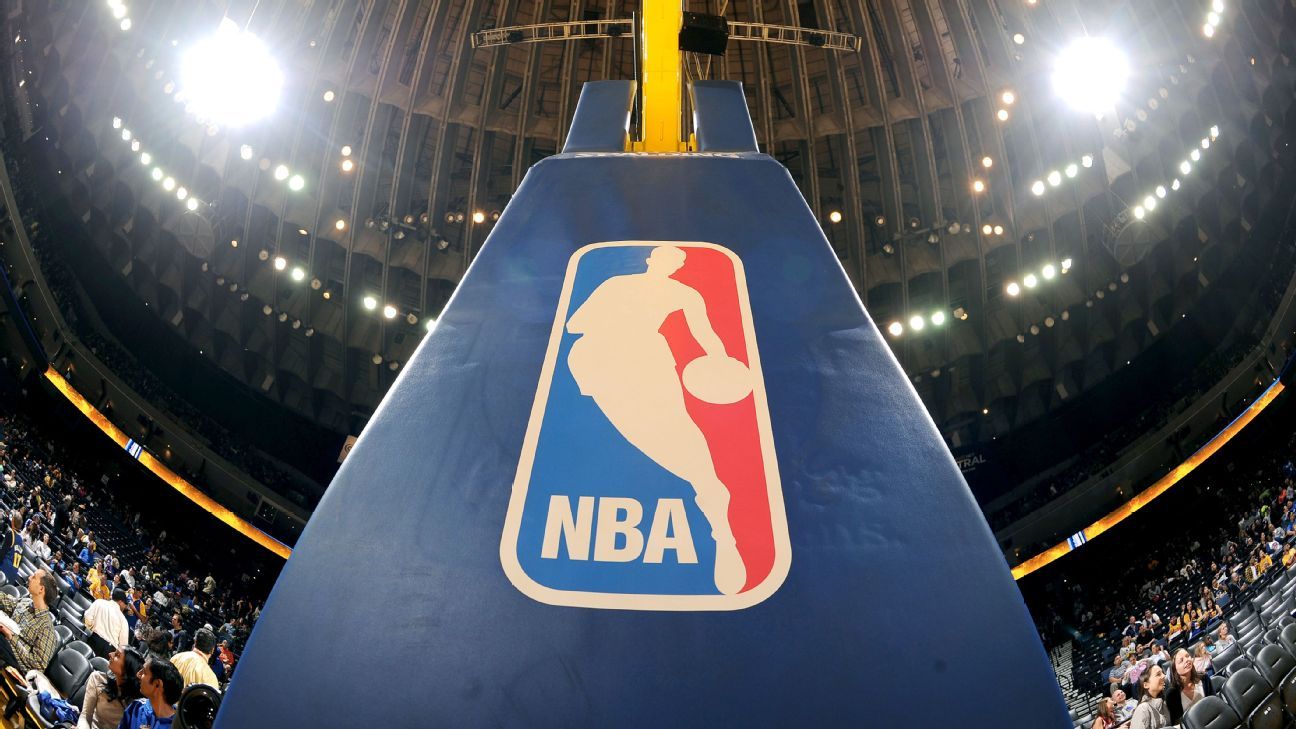The NBA’s revenue dropped 10% to $8.3 billion for the 2019-20 season amid losses because of the coronavirus pandemic, according to financial numbers shared with teams and obtained by ESPN.
The balance of the finances included an $800 million loss in gate receipts and a $400 million loss in sponsorships and merchandise, sources said.
The NBA’s losses included $200 million in deemed “net negative impact” from a monthslong splintering of a partnership with China in the aftermath of the Daryl Morey tweet promoting Hong Kong freedom a year ago, sources said.
As the NBA and National Basketball Players Association discuss start dates and financial amendments to the collective bargaining agreement, the potential for a grim financial landscape without fans in the 2020-21 season looms over the league.
The 2019-20 season losses are slight in comparison to what awaits the NBA in 2020-21 if the season advances without fans and accompanying gate-night receipts, the league told teams — a projected 40% loss in overall revenue, or approximately $4 billion.
Talks about the salary cap and luxury tax levels for next season remain at the core of discussions between the NBA and the NBPA. Had the league and players’ union followed the normal formula to determine this season’s salary cap — linking it to overall league revenue — sources told ESPN that it would have fallen to around $90 million — down from about $109 million in 2019-20.
Dropping to that level would have put almost every team into severe luxury tax territory, and it would have left very little available money for this offseason’s free agents.
The league and union are negotiating methods of artificially inflating the 2020-21 salary cap to keep it around $109 million, sources told ESPN. Those talks have centered on placing a larger percentage of each player’s salary into an escrow fund. If at the end of the season, total player salaries exceed their mandated share of overall basketball-related income — about 50% — some or even all of that escrow money would go to teams.
The union is having its own internal discussion with its membership about what kind of escrow system is fairest to the full body of players. Taking a steep percentage this season — and returning to the normal 10% escrow system in 2021-22 — could disadvantage one subset of players compared to spreading the hit over multiple years.
For its part, the league is anticipating a revenue rebound in 2021-22 at the earliest. In inflating the cap in the interim, league officials and team governors are hoping to avoid a repeat of the salary-cap spike of 2016, when a $20 million-plus leap in the cap enabled the Golden State Warriors to sign Kevin Durant away from the Oklahoma City Thunder in free agency.
The NBA bubble in Orlando recouped $1.5 billion in revenue that would’ve been lost without restarting the season, sources said. Expenses for the bubble were $190 million — $10 million more than originally estimated, sources said.
The NBA is open to the idea of regional pods and intraconference scheduling to lessen team travel and exposure to the coronavirus, sources said. The NBA hopes that it can play games with fans in home arenas in 2020-21, but it has also been exploring the possibility of modeling a bubble environment similar to what Major League Baseball used to finish the 2020 season’s playoffs, sources said.
The NBA is pushing to reach an agreement with the National Basketball Players Association for a Dec. 22 start to the season and a 72-game regular season — with a play-in tournament for the playoffs — that would allow the league to finish its season before the Tokyo Olympics on July 23, sources said.
Another alternative — less preferable to the league — is starting the season around the Martin Luther King holiday in mid-January, which would push the completion of the season deeper into the summer — causing the NBA playoffs to compete on television with the Summer Olympics and the start of the NFL and college football season.
The NBA is anxious to get its calendar back on track for the start of the 2021-22 season, and delaying the start of the 2020-21 season until mid-January would make it difficult to do that.
The NBA is considering releasing the schedule in halves to increase flexibility, allowing for postponements that are likely inevitable with coronavirus outbreaks. The NBA doubts an All-Star Game and All-Star Weekend — set for Indianapolis in February — make sense and may use an extended midseason break to offer rest for players, or to make up games that might be lost due to the virus.
ESPN front office insider Bobby Marks contributed to this report.
